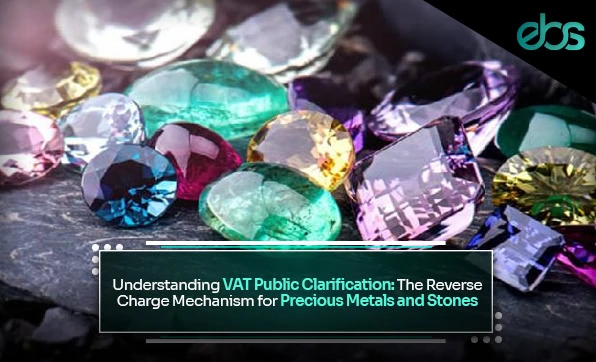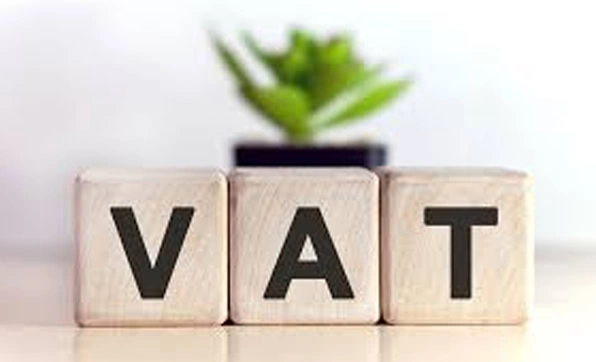The United Arab Emirates (UAE) has issued an updated Public Clarification concerning the application of the Reverse Charge Mechanism (RCM) on transactions related to precious metals and stones among VAT-registered businesses. Public Clarification VATP043 replaces the preceding VATP032 and introduces vital changes that organizations want to recall for tax compliance. These clarifications, mainly regarding the UAE Reverse Charge Mechanism, play an important function in making sure that the VAT system stays efficient, transparent, and in line with worldwide best practices.
Key Changes and Effective Date
The new Public Clarification VATP043, which came into effect on February 26, 2025, provides detailed guidance on how VAT is carried out on the exchange of precious metals and stones. While the UAE has already made strides in making use of the Reverse Charge Mechanism VAT UAE for those items in VATP043. Additionally, clarifies its scope, making sure each organization and the tax government are on the same page.
It’s important to note that Public Clarification VATP043 supersedes VATP032. Therefore, any organizations that were previously following the guidance within the preceding clarification must adapt to the updated regulations.
What Is the Reverse Charge Mechanism (RCM)?
The reverse charge mechanism is a VAT mechanism in which the duty for reporting VAT is shifted from the seller to the buyer of goods or services. Instead of the supplier charging VAT to the consumer and remitting it to the tax authority, the buyer (generally a VAT-registered business) becomes chargeable for calculating and paying the VAT directly to the tax authority.
This mechanism is especially beneficial in conditions in which the supplier is placed outside the tax jurisdiction, or in sectors such as , when items, precious metals and stones where intra-business transactions are frequent. The use of the Reverse Charge Mechanism facilitates the simplification of the VAT series in sectors in which precious items are traded among VAT-registered businesses, minimizing the risk of fraud and tax evasion.
Application of RCM to Precious Metals and Precious Stones
Under the VATP043 clarification, the Reverse Charge Mechanism applies to transactions between VAT-registered businesses (registrants) involving the sale or transfer of precious metals and stones within the UAE. This means that once a VAT-registered business sells or transfers precious metals or stones to any other VAT-registered business within the UAE, the buyer (the recipient of the items) is responsible for applying VAT rather than the seller.
For businesses involved with buying and selling of precious metals or stones, the clarification provides clarity on the VAT treatment of these transactions, helping to prevent misunderstandings and ensure proper compliance. As per the clarification, businesses must ensure that they meet specific criteria, along with right invoicing and correct VAT reporting, to avoid potential issues during tax audits.
Why Is This Important for Businesses?
The application of the Reverse Charge Mechanism on precious metals and stones guarantees that VAT is best paid as soon as possible on those items, despite the fact that they’re resold a couple of instances within the supply chain. This method streamlines VAT administration because it gets rid of the need for providers to rate VAT on items bought by VAT-registered organizations. Instead, the duty for paying VAT is transferred to the customer, making the tax system easier and more efficient.
For organizations dealing in precious metals and stones, along with jewelers, traders, and importers, knowing how those changes are crucial. Failure to conform with the brand-new regulations may bring about consequences or fines. Therefore, it’s far more essential for organizations to study their inner strategies and make sure they’re following the updated VAT guidelines mentioned in VATP043.
Key Takeaways from VATP043
- Reverse Charge Mechanism: VAT-registered businesses involved with buying and selling precious metals and precious stones will be required to use the Reverse Charge Mechanism. The buyer is responsible for accounting for and paying VAT.
- Public Clarification VATP043: This new clarification replaces VATP032 and provides specific guidance at the VAT treatment of transactions related to precious metals and stones.
- Effective Date: The changes will come into effect on February 26, 2025, in alignment with Cabinet Decision No. 127 of 2024.
- Compliance: Businesses have to make sure they comply with the updated VAT recommendations to keep away from consequences and make sure they have accurate tax reporting.
Conclusion
Public Clarification VATP043 represents a vital breakthrough in simplifying VAT methods within the UAE, especially for organizations concerned with the trade of precious metals and stones. By moving the VAT responsibility to the buyer in those transactions, the Reverse Charge Mechanism guarantees a more streamlined and transparent tax system. However, businesses must stay vigilant and stay updated with these changes to make sure they comply to the brand-new regulations before the effective date of February 26, 2025. This method not only reduces the executive burden on providers.
How Can ebs Chartered Accountants Assist?
ebs Chartered Accountants can assist businesses in navigating the complexities of VAT compliance with the aid of presenting professional guidance at the application of the Reverse Charge Mechanism for precious metals and stones, making sure correct reporting and averting consequences. Their expert services can streamline your tax strategies and ensure complete compliance with the updated VAT regulations.
FAQs
What is the Reverse Charge Mechanism for precious metals and stones?
It shifts the VAT responsibility from the seller to the buyer in transactions involving precious metals and stones.
When does VATP043 become effective?
VATP043 will come into effect on February 26, 2025.
What businesses are affected by VATP043?
VAT-registered businesses trading in precious metals and stones within the UAE are impacted by this clarification.
How can businesses ensure compliance with the new rules?
By reviewing their VAT reporting and invoicing procedures to align with the updated Reverse Charge Mechanism under VATP043.


